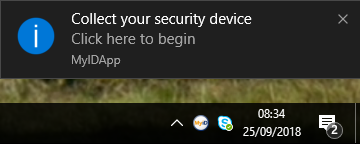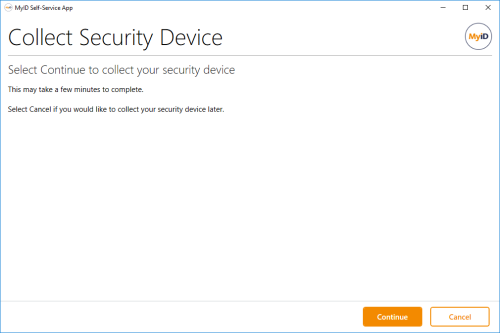3.2 Self-Service App wizard mode
The Self-Service App wizard mode is designed to run on the user's own PC and to provide notifications. If the user has a task available – for example, the collection of a security device – the Self-Service App displays a Windows notification.
The user then clicks the notification, and the Self-Service App guides the user through the task.
You can set up the Self-Service App to be run manually by the user to check for updates, to run automatically at Windows logon, to run periodically as a scheduled task, and so on. The app does not monitor available tasks continuously – it checks for tasks only when it is run, and shuts down if there are no current tasks available.
A simple scenario would be:
- The user logs on to their own PC.
- The Self-Service App starts automatically.
- The Self-Service App checks the MyID server for pending tasks for the user.
-
If there are any tasks outstanding – for example, the collection of a new smart card – the Self-Service App pops up a notification in the Windows system tray.
Note: If the user is collecting a task that supports both contact and virtual smart cards (VSCs), the Self-Service App gives preference to the collection of a VSC over a contact card.
- The user clicks the notification bubble and the Self-Service App window appears.
-
The Self-Service App guides the user through the task.
If there are no tasks available, the Self-Service App shuts down without alerting the user. This ensures that the user is presented with information only when they need to make a decision.

